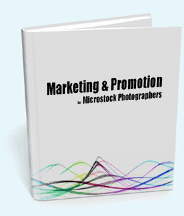Cutcaster have announced the launch of their "Betta than Vetta" collection, "Betta than Vetta" is apparently Irish for mountaintop, and is a collection of hand selected images available from the cutcaster stock collection of almost 400,000 items.
It's not the first hand picked collection and certainly not the last. While premium microstock sounds like an oxymoron to some traditionalists, and tongue in cheek or not, I can see that microstock agencies are taking multiple approaches to tackling a common problem: producing good image search results is difficult!
How are the different agencies uncovering their best images?
istockphoto and possibly others track clicks in their search results to match them for relevancy against search terms. Not just frequent downloads with matching keywords are shown in istock results, but images that were popular with people who previously searched for the currently chosen keywords. istock plan to extend this to match against region searched e.g. images often viewed or purchased by Italian buyers will be recorded separately to images popular with buyers based in the states hence creating results more targeted to current trends and national preferences in each region.
Crestock seem to be creating a premium only collection by not selecting anything but the highest quality images. The only sacrifice perhaps being the sanity of contributors (high rejection) and potential perhaps to miss sales of 'unusual subjects' that is created by having a collection of such size that virtually anything can be found if you dig deep enough.
Dreamstime have (I think?) begun to crowdsource the selection process with their stock rank game. Stock Rank records images that buyers and photographers think will sell. It compares unsold and sold images side by side possibly allowing dreamstime to filter low quality compositions and poor marketability from their collection even if those images have made an occasional sale. It seems dreamstime have yet to use this data other than to create a vanity badge for their contributors in the forums and profile pages.
Panthermedia hand pick uploads during the review process and mark them as RECOMMENDATION or EDITORIAL TIP giving them priority in search results.
The Untapped Niches
Hand edited collections or at minimum hand picked 'popular images' or category pages is a great and relatively easy way to improve the feel of quality in a stock collection, but I feel that there is still money left on the table here. I have always thought that using istock lightboxes and similar tools (here is a typical example of eye candy to inspire all but the most cynical photo editor) or using and API like fotolia API to create a niche site or search function is something with a lot more potential for growth.
Creating the facility to allow users to do this I feel should at least be on the to-do list for the agencies that have yet to implement it. If course users won't spend their own time sifting images unless it's relatively easy and there is some sort of reward structure in place for doing so, be that via an expensive and potentially risky API or via a relatively simple referral link to their 'public lightbox' and a few search tools for searching within that lightbox.
To make and example, it takes a lot more than just sticking 'food' into a search to find a great collection of food photos. A good quality hand picked 'food' collection would include lifestyle images like picnic's in open fields, people enjoying a bar-b-que with friends in a back garden, fine restaurant dining, children cooking, enjoying wine on a yacht, the list is endless and very few of these would appear if you just tacked on the keyword 'food' and looked at your search results. It's already been demonstrated making good images easy to find is something that people are willing to pay extra for.
Microstock agencies have built themselves huge collections of images, advanced search tools that further optimise search relevancy for popular terms but compared to macro they are still very much lacking when it comes to serving up 'style'. With so many contributors the good images are all there, but are often lost in the 'moraine'.
Like leveraging the 'crowd' who originally created all these images, I feel there is no better way to generate novel ways to sort and sell all this content than by enabling the crowd to do it. There is no doubt that referral marketing works, but it has it's pitfalls, it can adversely affect a brand if not controlled properly and catching up with the big agencies in terms of development cost would be an expensive decision for a growing agency. Making use of anything more than the simple API tools is an impossibly steep learning curve for all but the most 'techie' of microstock contributors, however these are the exactly people who make a lot of this work - just like a successful microstock agency it's a mix of photography AND technology knowledge.
Related Posts



It's quiet in here! Add new comment